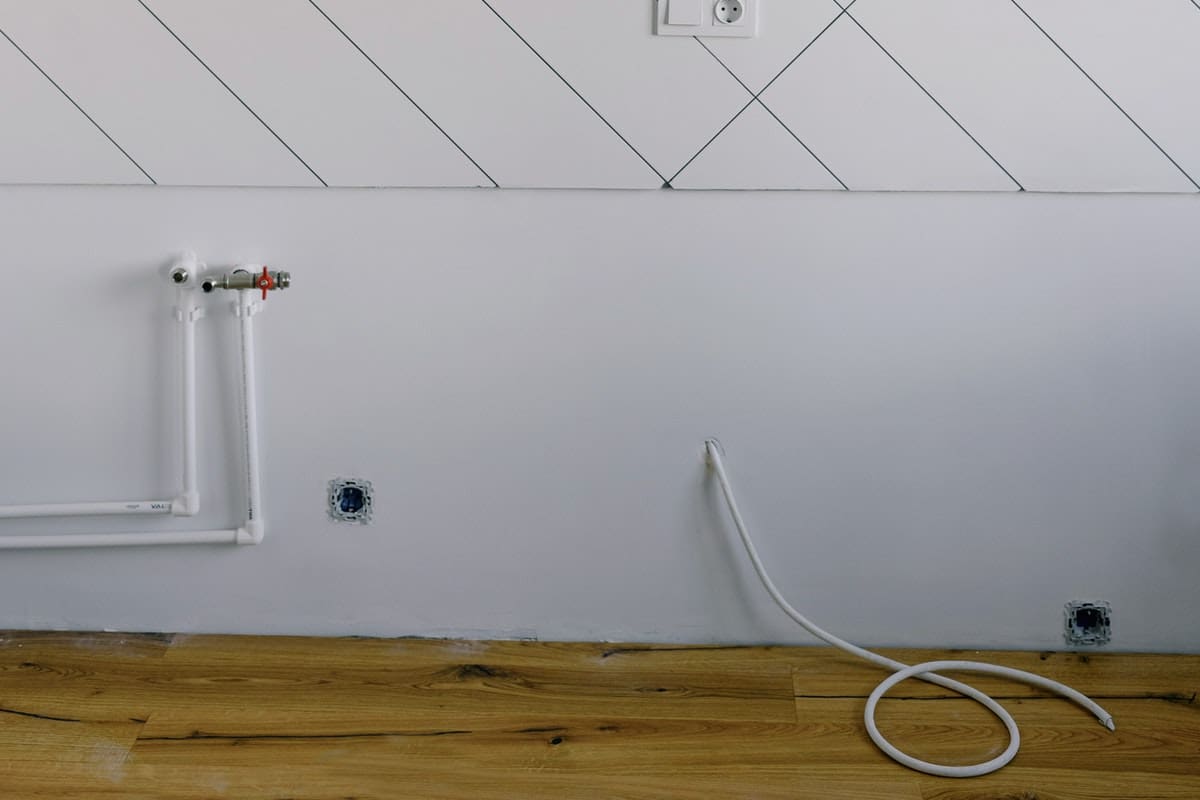A concrete floor is particularly efficient at retaining heat making it an excellent material to work with underfloor heating.
It may be particularly solid, yet you should be extremely careful not to damage it with an incorrectly installed underfloor heating system.
Ensure that you use proper insulation before laying the underfloor heating system as failure to do so will harm its effectiveness.
The installation process can be relatively straightforward with the right tools, and you can have the Wundatherm boards down in no time.
In this guide, we will look at how to install underfloor heating on a concrete floor and why concrete works so well with an underfloor heating system.
How To Install Underfloor Heating On Concrete Floor
By making sure you undertake the correct preparation and by fitting a perimeter strip, installing an underfloor heating system on a concrete floor should be straightforward.
You may have to cut some boards, yet that is easily done, and you can have the system ready soon enough.
Get Prepared
Take the time to ensure that you have sufficiently measured the area and have the requisite equipment and tools to complete the installation. You really do not want to stop and start between trips to the hardware store.
Prepare The Flooring
If there is any existing flooring then this needs to be prepared which can take some time. At this point, you should simply be exposing the layer of concrete flooring.
Once fully exposed, make sure you have cleaned the concrete floor of any debris or dust, so the area is as clean as it can be before you get started.
Wundatherm boards can be applied to new or existing concrete floors, but they must be dry, flat, and level.
Also take the time to check the floor as it must be free from damp, grease, and oil as this will prevent the adhesive from successfully adhering.
Once the concrete floor is ready, lay down some insulation, such as polystyrene or polyurethane boards, and ensure that the damp-proof membrane is fully cured.
Fitting The Perimeter Strip
Remove any skirting boards and doors as these will require trimming after the final floor finish. Around the perimeter of the area you are heating, lay a perimeter edge strip by using the sticky tape on the back of a hand staple gun.
The perimeter strip not only marks the area but allows for expansion and helps reduce heat loss.
Pass Through The Piping
As you may have to cut some boards anyway, you may want to drill a few holes in the wall before laying then fixing the boards themselves. Once the pipes are through without any kinks, protect and seal the ends with tape.
Check The Pipe Layout Drawing

This is the ideal time to consult the pipe layout drawing, so you can ensure that the manifold is in the correct position. The pipe layout drawing will also demonstrate how the pipework will be set with the boards on top.
Before you begin the installation, work out the routes for any transitional pipe runs and boards.
Cut The Boards
You may need to cut some boards to get them to neatly fit in the right places and+ this is easily done with a fine-toothed saw or craft knife.
The Installation Process
First, attach your heating pipe to the manifold then lay the boards as instructed. You should use Wunda spray adhesive to ensure quick and effectively strong bonding of Wundatherm boards to a concrete floor.
An alternative is Mapei Ultrabond ECO 380 which can provide another strong bond. Once the boards are installed and in place, you can lay out the floor heating pipes.
Why Underfloor Heating Can Work Well With Concrete Floors
As a common material, concrete is a great heat conductor. Concrete’s thermal mass helps the material retain heat to ensure that each room, and your entire home, can stay warm for longer.
This is even when the heating is turned off which is a huge advantage to have over a conventional radiator system. With that heating retention in mind, a polished concrete floor can work incredibly well with underfloor heating.
With a successful installation, the underfloor heating will warm up, and the concrete can absorb the heat then keep it in place.
You could run the underfloor heating system all day at a lower temperature of around 15 °C or 16 °C to create a base heating temperature for the entire house.
By having the heating down by a few degrees, you should see a reduction in your energy bills.
Final Thoughts
As a flooring material that retains heat, concrete can be incredibly effective and works really well with an underfloor heating system.
There are some simple measures to take when you are installing underfloor heating on a concrete floor, yet these are easily done. With the right adhesive and an appropriate pipe layout drawing, you can soon be saving money on your energy bills.
Contact us for further information on how to install an underfloor heating system in your home.